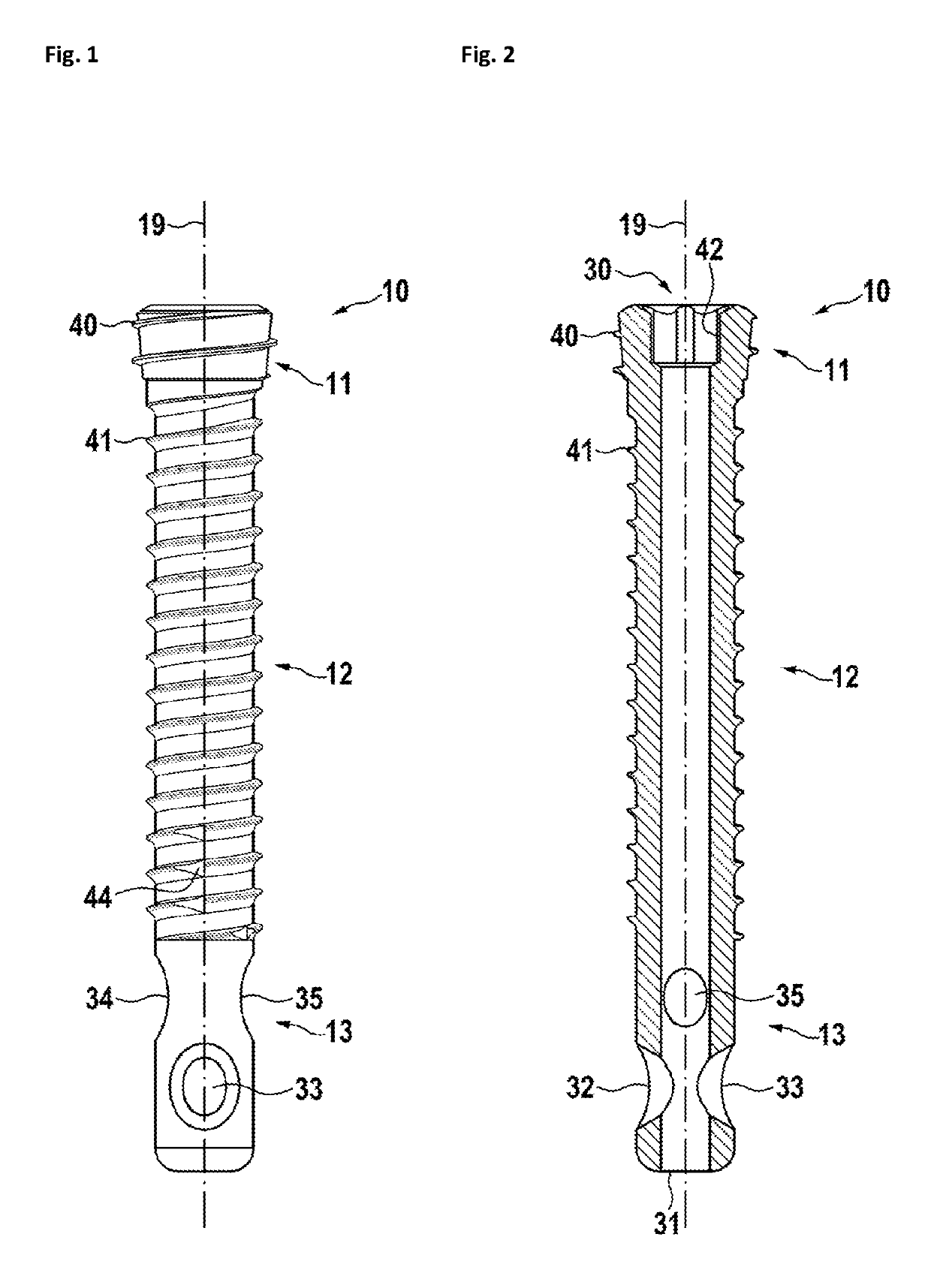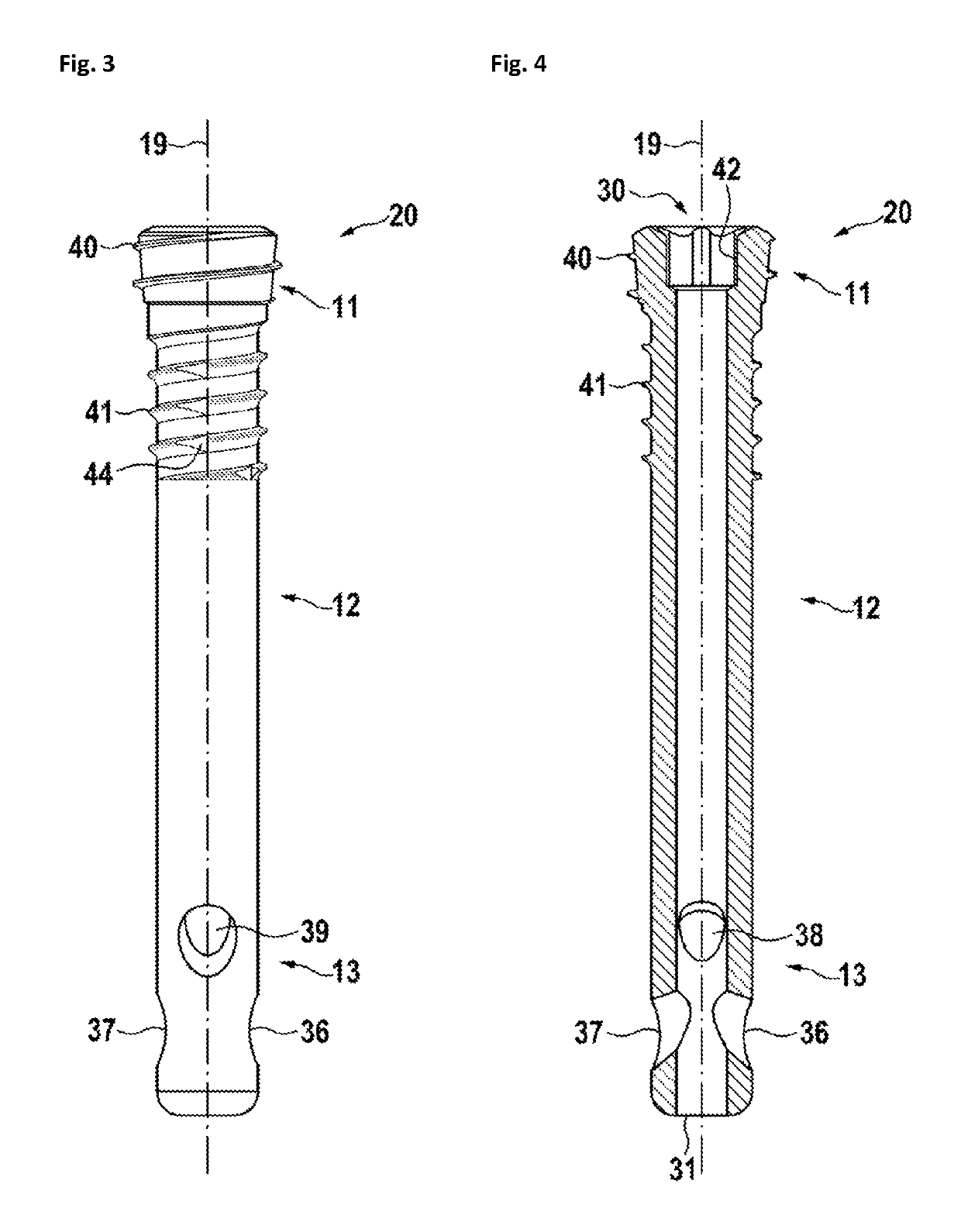Cannulated bone screw
a cannulated bone screw and screw technology, applied in the direction of internal osteosynthesis, fasteners, osteosynthesis devices, etc., can solve the problems of no longer being able to remove, and being unable to remove, so as to reduce the removal torque, increase the retention force, and avoid further damage to the bone structure
- Summary
- Abstract
- Description
- Claims
- Application Information
AI Technical Summary
Benefits of technology
Problems solved by technology
Method used
Image
Examples
Embodiment Construction
[0040]In FIG. 1, a first embodiment of a bone screw 10 is shown. The bone screw 10 has a threaded proximal section 11, a center section 12, and a distal section 13. The bone screw 10 further has a hollow channel 30 from the proximal section 11 through the distal section 13, defining a center axis 19. The proximal section 11 is approximately cylindrical shaped. It may also have a conical shape to simplify insertion. The proximal section 11 has a first outer thread 40, which is designed to interface with a bone plate 150 as shown in FIG. 16. The center section 12 has a cylindrical shape and is at least partially threaded with a second outer thread 41. The second outer thread 41 may have at least one cutout 44 to improve cutting of the outer thread into the bone material when inserting the screw. The pitch of the first outer thread 40 is less than the pitch of the second outer thread 41 to allow pressing of a bone plate 150 interfacing with the first outer thread 40 to a bone interfaci...
PUM
 Login to View More
Login to View More Abstract
Description
Claims
Application Information
 Login to View More
Login to View More - R&D
- Intellectual Property
- Life Sciences
- Materials
- Tech Scout
- Unparalleled Data Quality
- Higher Quality Content
- 60% Fewer Hallucinations
Browse by: Latest US Patents, China's latest patents, Technical Efficacy Thesaurus, Application Domain, Technology Topic, Popular Technical Reports.
© 2025 PatSnap. All rights reserved.Legal|Privacy policy|Modern Slavery Act Transparency Statement|Sitemap|About US| Contact US: help@patsnap.com



